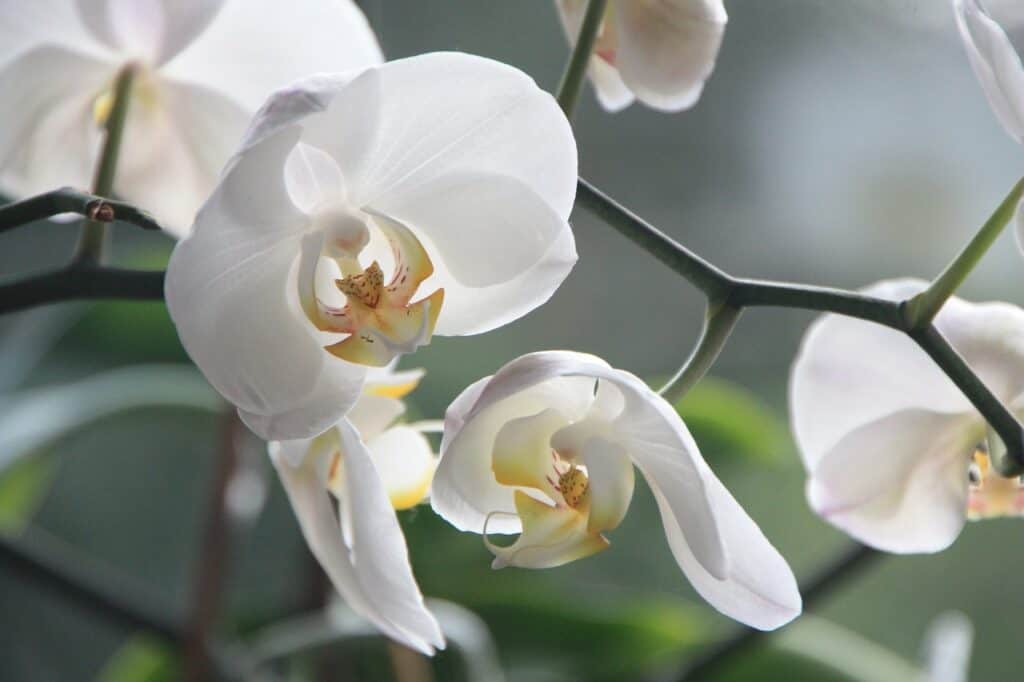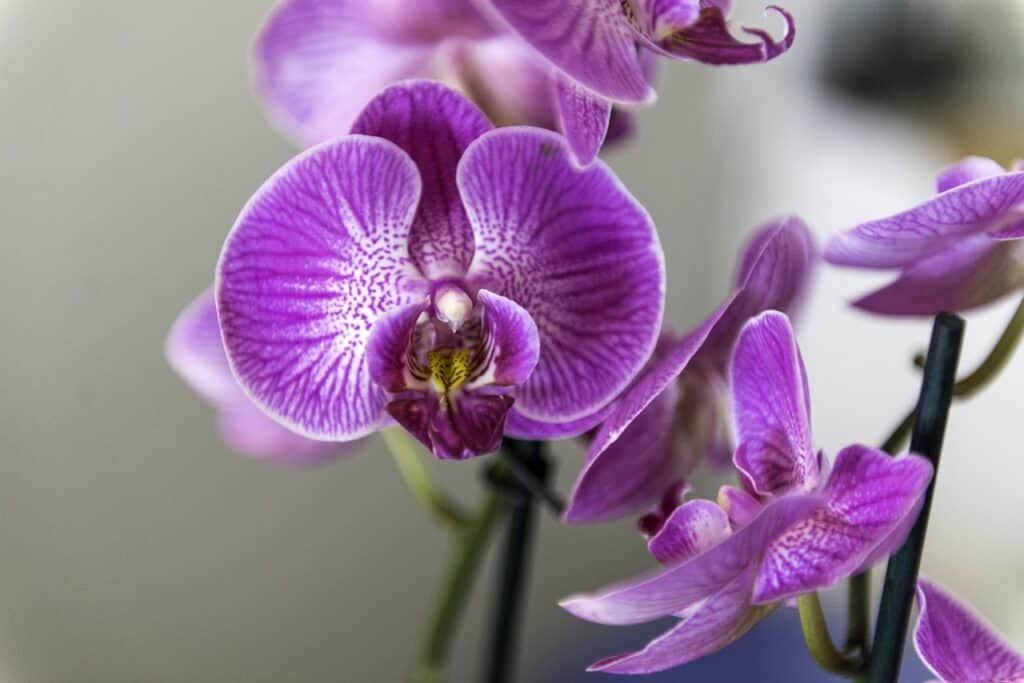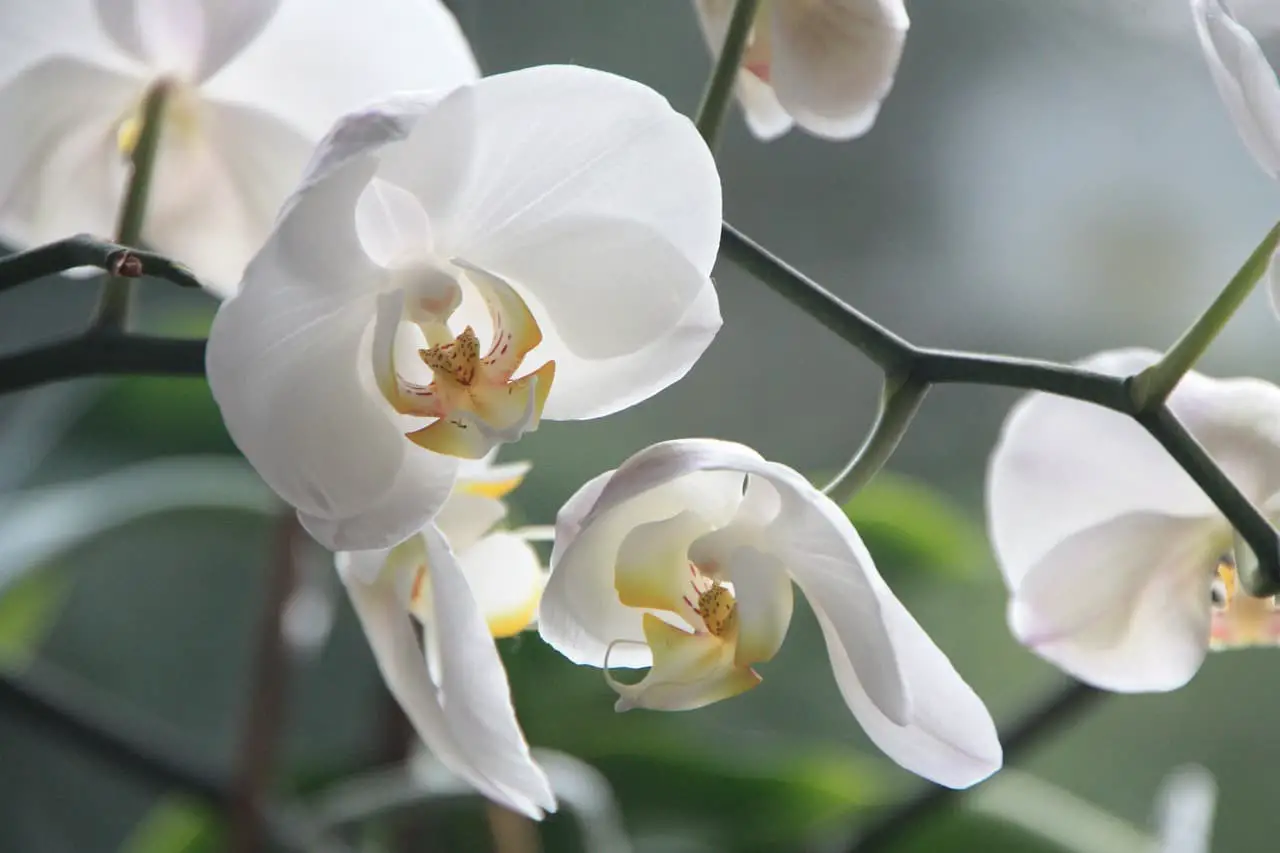Orchids are beautiful and delicate flowers that require special care to thrive. Proper orchid care during the flowering period is essential to keep these stunning flowers looking their best. In this article, we will discuss the best practices for orchid care during the flowering period.

Choosing the Right Location
The location where you place your orchids during the flowering period is critical. Orchids need a lot of light to grow and bloom, but too much direct sunlight can damage their delicate petals. Ideally, orchids should be placed in a bright, indirect light location, such as near a north or east-facing window.
It’s also essential to keep the temperature and humidity levels consistent. Orchids prefer temperatures between 60-85 degrees Fahrenheit and humidity levels between 40-60%. To maintain the right humidity levels, you can place a tray of water near the orchids, mist them with water regularly, or use a humidifier in the room.
Watering and Fertilizing
During the flowering period, it’s essential to water your orchids properly. Orchids require a careful balance of water and air to thrive. Overwatering can cause root rot, while underwatering can cause the flowers to wilt and fall off prematurely.
When watering your orchids, it’s essential to use room-temperature water and ensure that the water reaches the bottom of the pot. You should allow the potting mix to dry out slightly between watering sessions.
Fertilizing is also essential during the flowering period. Orchids need proper nutrients to grow and bloom correctly. You should use a fertilizer specifically designed for orchids and follow the manufacturer’s instructions carefully. It’s also essential to avoid over-fertilizing, as this can damage the plant.
Pruning and Repotting
Pruning is an essential part of orchid care during the flowering period. Once the blooms have died, you should prune the flower spike. This will encourage the plant to redirect its energy toward new growth and future blooms.
Repotting is also important for orchid care, but it’s not something that needs to be done during the flowering period. Orchids should be repotted every one to two years to ensure that they have fresh potting mix and sufficient space to grow. When repotting, be sure to use a potting mix specifically designed for orchids.
Preventing and Treating Pests
Pests can be a significant problem for orchids during the flowering period. Common pests include spider mites, mealybugs, and scale insects. These pests can cause significant damage to the plant if left untreated.
To prevent pests, it’s essential to keep the plant clean and healthy. Regularly inspect the plant for signs of pests and treat any infestations immediately. You can use insecticidal soap or neem oil to treat common orchid pests.

Conclusion
In conclusion, proper orchid care during the flowering period is essential to keep these stunning flowers looking their best. By following the tips outlined in this article, you can ensure that your orchids thrive and produce beautiful blooms year after year. Remember to choose the right location, water and fertilize properly, prune and repot when necessary, and prevent and treat pest infestations. With proper care, your orchids can be a source of beauty and joy for years to come.

